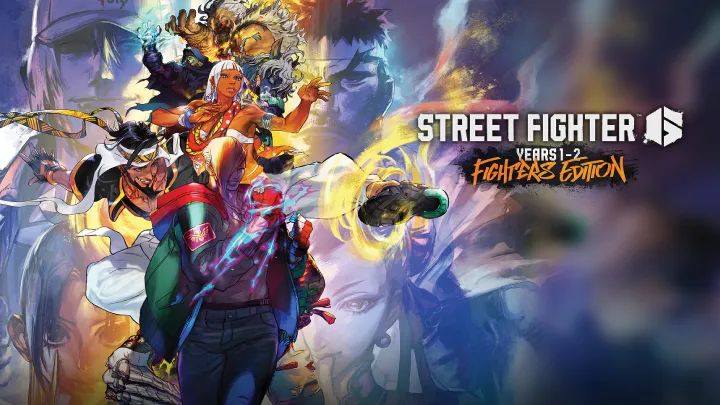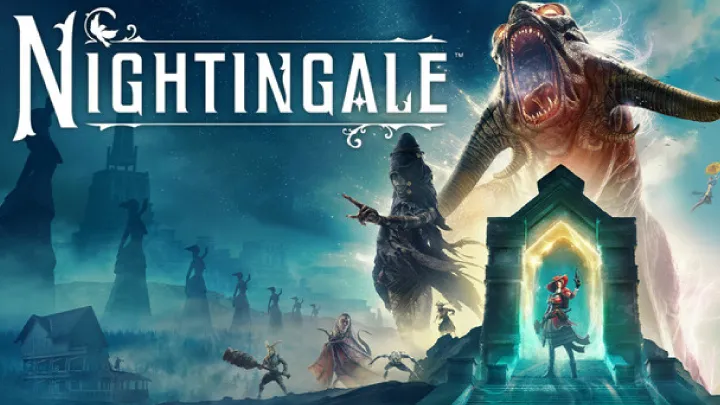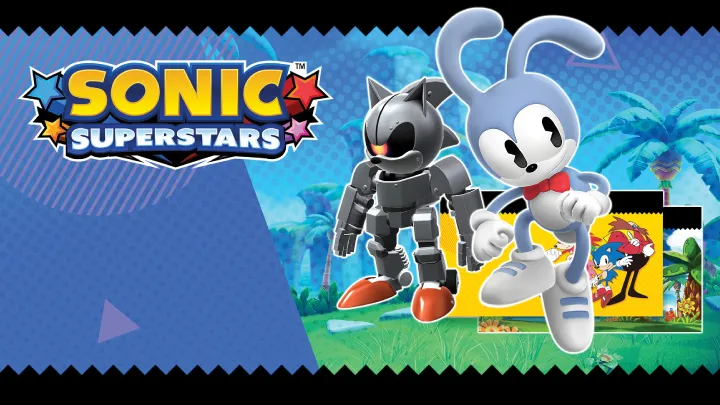
Street Fighter 6 signifies a remarkable evolution in both mechanics and gameplay design within the iconic fighting game franchise. Not only does it build on the legacy of its predecessors, but it also introduces innovative systems that reshape competitive play. This article delves into the intricate mechanics of Street Fighter 6, examining how these features impact the game’s meta, character viability, and player strategies, ultimately redefining the landscape of competitive fighting games.
The Foundation of New Mechanics
Before delving into the implications of Street Fighter 6's mechanics, it’s vital to understand the foundational systems introduced that differentiate it from earlier iterations.
Drive System: A Game-Changer
The Drive System is one of the most significant introductions in Street Fighter 6, incorporating multiple features that enhance gameplay dynamics.
- Drive Gauge
- Players now have access to a Drive Gauge that allows for various techniques, including Drive Impact, Drive Parry, and Drive Reversal. This gauge adds a strategic layer, as players must manage it judiciously to gain an advantage.
- Tactical Decisions
- The introduction of these mechanics encourages players to think critically about their actions. For instance, using Drive Impact can launch opponents into a combo, but if overused, it leads to a depletion of the Drive Gauge, leaving players vulnerable.
Enhanced Defensive Options
Street Fighter 6 emphasizes defense as much as offense, offering new layers to defensive play styles.
- Drive Parry
- The Drive Parry mechanic allows players to negate incoming attacks while regaining a portion of their Drive Gauge. This innovation empowers players to counter aggressive foes effectively and creates opportunities for punishing counterattacks.
- Risk and Reward
- The balance between offense and defense is crucial. Players must assess their opponents' tendencies to exploit openings while remaining cautious about their own gauge management.
Meta Evolution: Shifting Strategies
As these mechanics have been integrated, the meta of Street Fighter 6 shifts accordingly, encouraging players to adapt their strategies to the game's evolving competitive landscape.
Initial Character Viability
At launch, certain characters emerged as front-runners due to their compatibility with new mechanics.
- Strong Launch Characters
- Characters like Luke and Jamie gained significant attention for their ability to exploit the Drive System effectively. Their movesets, combined with enhanced mobility and combo potential, made them favorites in early tournaments.
- Meta Dynamics
- The meta began to reflect preferences for characters that could capitalize on the new system, leading to a temporary skew in competitive play. While experienced players aimed to master the existing mechanics, newcomers often gravitated toward these overpowered characters.
Counter-Strategies Emerge
As players began to adapt to the dominant characters, counter-strategies developed, leading to a more balanced competitive scene.
- Adapting Character Pools
- Players initially failed to capitalize on characters like Ryu and Chun-Li, who, while not as flashy, proved effective against over-extended players reliant on aggressive styles. Understanding how to play defensive characters became key in countering the powerful offense displayed by others.
- Focus on Fundamentals
- As the meta evolved, skilled players emphasized fundamental techniques, such as punishing unwarranted Drive Impact attempts or establishing strong zoning tactics to control space.
Impact on Competitive Play: Community Response
The community's response to the evolving meta of Street Fighter 6 has been dynamic. Players, commentators, and analysts alike have contributed to the ongoing discourse regarding competitive viability and strategy adaptation.
The Rise of Content Creation
With the anticipated success of Street Fighter 6, content creators have seized the opportunity to analyze gameplay mechanics and high-level strategies.
- Tutorials and Guides
- Many players turned to platforms like YouTube and Twitch for tutorials covering everything from beginner techniques to advanced strategies focusing on the new mechanics. This influx of resources has democratized knowledge within the community, allowing a wider audience to grasp complex strategies.
- Meta Discussions
- Community discussions have revolved around character viability and strategies, analyzing data from tournaments to identify shifts in player preferences. Via platforms like Twitter and Reddit, players share insights and techniques to improve the competitive outlook.
Tournament Scene Adaptations
As competitive events began to unfold, tournament rules, formats, and the community ecosystem adapted around the new meta.
- Character Bans and Adjustments
- Some tournaments introduced character bans to reduce the dominance of top-tier selections, forcing players to explore alternative options and ultimately enhancing the breadth of character usage.
- Team Synergy
- In team-based tournaments, the exploration of character synergies became fundamental. Players began pairing complementary characters, such as a strong offensive character with a robust defensive counterpart, creating layered strategies focused on teamwork.
Character Balance: The Quest for Fair Play
One of the ongoing challenges in Street Fighter 6 is the quest for character balance. Maintaining a fair environment where all characters are viable fosters healthy competition.
Patch Updates and Community Feedback
Capcom's ongoing commitment to balance through patch updates reflects its awareness of the meta's evolution.
- Regular Adjustments
- Capcom frequently releases balance patches based on community feedback and tournament results. This approach ensures that characters perceived as dominant.
- Community Engagement
- The developers have emphasized listening to player concerns via forums and social media channels, creating a feedback loop that keeps the community engaged with the game’s development.
Addressing Overpowered Characters
Identifying and addressing overpowered characters has been a focus, with some requiring more drastic adjustments.
- Example of Luke
- Luke, initially viewed as overpowered due to his versatility, faced nerfs that aimed to reduce his effectiveness without eliminating his unique playstyle. Balancing such characters involves careful calibration to maintain their appeal while preventing the excessive dominance seen in competitive play.
- Adapting to Changes
- As balance changes roll out, players must continually adapt their strategies, reflecting the iterative nature of competitive play. This dynamism ensures that the meta continues to evolve.
The Role of Training Modes
As the competitiveness of Street Fighter 6 escalates, the game's training modes have become critical for both novices and veterans.
Learning Through Innovation
Street Fighter 6 includes enhanced training modes that facilitate skill development.
- In-Depth Training Features
- Players can utilize features to analyze frame data, explore combo routes, and practice specific mechanics like Drive Reversal or Drive Impact. This functionality empowers players to learn and master the intricacies of their characters.
- Match Simulation and AI
- The incorporation of AI opponents allows players to simulate matches against varying fighting styles, enabling them to prepare for real opponents as they learn to anticipate and react to different strategies.
Creating a Competitive Edge
Players who leverage training modes effectively will have a distinct advantage.
- Character Mastery
- The ability to practice specific moves or combos repetitively can lead to muscle memory development. This mastery translates to real-match applications, especially crucial in high-pressure tournament settings.
- Strategic Analysis
- Utilizing training modes to dissect match strategies against top-tier characters helps players pinpoint weaknesses and craft counter-strategies, adding further depth to competitive play.
The Cultural Impact of Street Fighter 6
Street Fighter 6 also serves as a cultural touchstone, influencing trends within the community and the broader gaming landscape.
Celebrating Diversity in Characters
The diversity among characters reflects a commitment to inclusivity and representation, resonating with a global player base.
- Varied Fighting Styles
- Each character represents a unique cultural background, offering playstyles that reflect their heritage. Characters like Jamie and Lily introduce distinct mechanics tied to their origins, enriching the gameplay dynamic.
- Community Identity
- This diversity fosters a sense of belonging, allowing players from various backgrounds to see themselves represented within the roster, further enhancing the cultural appeal of the game.
Engaging with Global Communities
The success of Street Fighter 6 correlates with its engagement with players worldwide.
- International Tournaments
- Global tournaments attract competitors from all walks of life, creating a melting pot of ideas, styles, and strategies. These events foster community engagement and stimulate the growth of competitive scenes in various regions.
- Streaming and Spectatorship
- The rise of streaming platforms has allowed players to share their experiences and skills with a larger audience. Viewers can participate in the community by watching tournaments, learning from high-level play, and engaging in discussions online.
The Future of Street Fighter 6 and Beyond
As Street Fighter 6 continues to evolve, questions about its future and the ongoing development of its mechanics and community engagement arise.
Expanding the Competitive Landscape
With the growing popularity of the game, players are eager to see how the competitive scene will develop.
- New Characters and Balance
- Future DLC characters will undoubtedly impact the meta as they are integrated, introducing fresh mechanics that can shift the balance of power.
- Adaptation of Strategies
- As the character roster expands, strategies must evolve accordingly. Players will need to continuously adapt their approaches to engage effectively in the shifting landscape.
Persistence of Community Engagement
Maintaining community interest is crucial for the longevity of Street Fighter 6.
- Sustained Developer Support
- Ongoing communication from developers about updates and balance changes will remain essential in cultivating a healthy competitive environment.
- Fostering Growth
- By nurturing a robust community culture, tournaments and events will thrive, ensuring that players feel a sense of purpose and belonging within the competitive ecosystem.
Conclusion: The Lasting Impact of Street Fighter 6
Street Fighter 6 signifies a pivotal moment in fighting game history, blending innovative mechanics with a rich competitive landscape. The evolution of its meta and the community's response highlight the dynamic nature of competitive play, while the game’s cultural impact reinforces its status as a beloved franchise. As new strategies and characters emerge, the dialogue around fate, free will, and competitive integrity will continue to shape the future of this iconic series. Players and developers alike navigate this landscape, paving the way for an ever-evolving narrative within the world of fighting games.

















